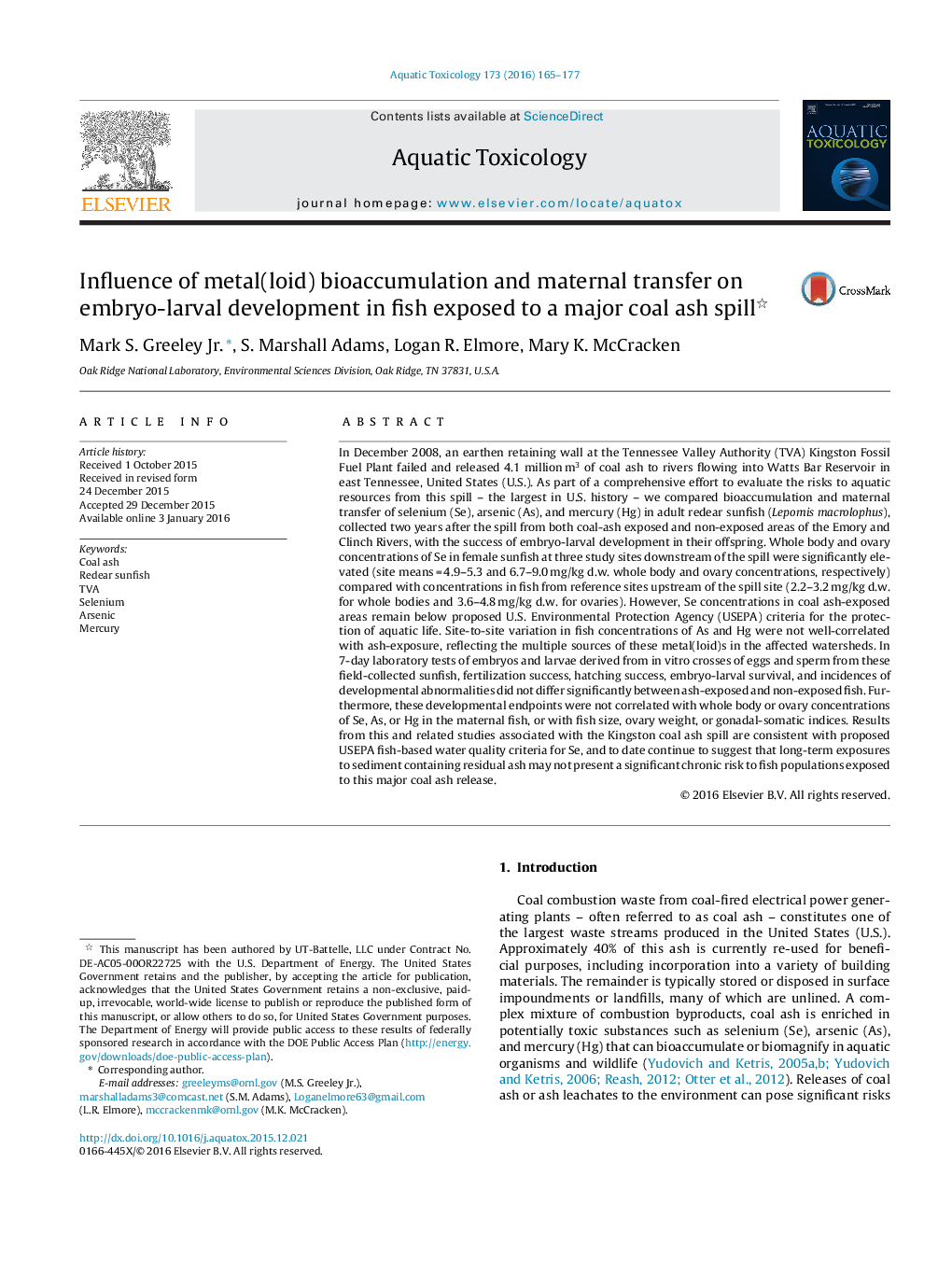| کد مقاله | کد نشریه | سال انتشار | مقاله انگلیسی | نسخه تمام متن |
|---|---|---|---|---|
| 4528876 | 1625932 | 2016 | 13 صفحه PDF | دانلود رایگان |
• Selenium and other metal(loid)s were elevated in the whole bodies and ovaries of female sunfish exposed in situ for up to two years to a major coal ash spill.
• However, concentrations of selenium remained below proposed water quality criteria for aquatic life effects.
• No significant effects of selenium bioaccumulation and maternal transfer were observed on either fertilization success or early embryo-larval development.
• Proposed selenium criteria were apparently protective in this case-study.
In December 2008, an earthen retaining wall at the Tennessee Valley Authority (TVA) Kingston Fossil Fuel Plant failed and released 4.1 million m3 of coal ash to rivers flowing into Watts Bar Reservoir in east Tennessee, United States (U.S.). As part of a comprehensive effort to evaluate the risks to aquatic resources from this spill – the largest in U.S. history – we compared bioaccumulation and maternal transfer of selenium (Se), arsenic (As), and mercury (Hg) in adult redear sunfish (Lepomis macrolophus), collected two years after the spill from both coal-ash exposed and non-exposed areas of the Emory and Clinch Rivers, with the success of embryo-larval development in their offspring. Whole body and ovary concentrations of Se in female sunfish at three study sites downstream of the spill were significantly elevated (site means = 4.9–5.3 and 6.7–9.0 mg/kg d.w. whole body and ovary concentrations, respectively) compared with concentrations in fish from reference sites upstream of the spill site (2.2–3.2 mg/kg d.w. for whole bodies and 3.6–4.8 mg/kg d.w. for ovaries). However, Se concentrations in coal ash-exposed areas remain below proposed U.S. Environmental Protection Agency (USEPA) criteria for the protection of aquatic life. Site-to-site variation in fish concentrations of As and Hg were not well-correlated with ash-exposure, reflecting the multiple sources of these metal(loid)s in the affected watersheds. In 7-day laboratory tests of embryos and larvae derived from in vitro crosses of eggs and sperm from these field-collected sunfish, fertilization success, hatching success, embryo-larval survival, and incidences of developmental abnormalities did not differ significantly between ash-exposed and non-exposed fish. Furthermore, these developmental endpoints were not correlated with whole body or ovary concentrations of Se, As, or Hg in the maternal fish, or with fish size, ovary weight, or gonadal-somatic indices. Results from this and related studies associated with the Kingston coal ash spill are consistent with proposed USEPA fish-based water quality criteria for Se, and to date continue to suggest that long-term exposures to sediment containing residual ash may not present a significant chronic risk to fish populations exposed to this major coal ash release.
Journal: Aquatic Toxicology - Volume 173, April 2016, Pages 165–177
